I waited for about a year for this hardy globetrotter to arrive at my office in Brussels. When I first received the tweet from Matt Jacques, I was thrilled (finally, my turn)! I wasn’t sure if the Yashica would be delivered before I left for Istanbul for work. Fortunately, it was.
I took a few test shots in Brussels before I hopped onto the plane with The Traveling Yashica. As some other contributors mentioned, the shutter button on the Yashica T5 is quite sensitive, and it took me a while to get used to it.
As such, my initial shots were unintended. I would be testing the camera to see how it feels in my hands, tried to do a half-press to lock in the exposure and instead took a photo! Here is one of the early test shots taken in Brussels:
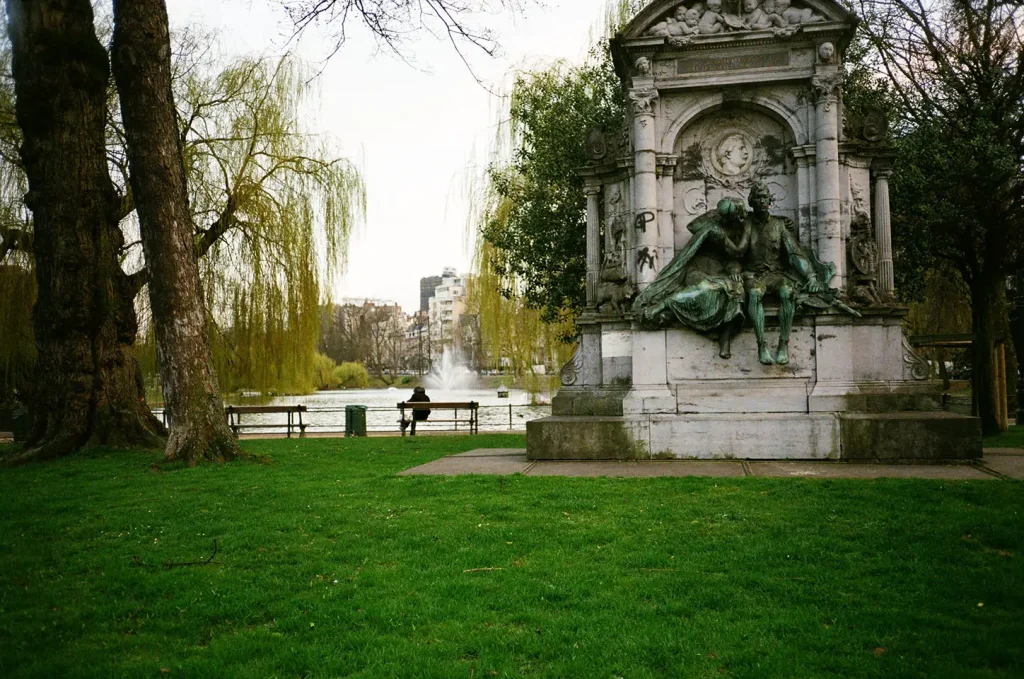 Anyhow, off we went to Istanbul, which is one of my favourite cities!
Anyhow, off we went to Istanbul, which is one of my favourite cities!
I tell friends that Istanbul is a remarkable city and it can cause a sensory overload as there is so much going on all the time. Heady aromatic spices in the bazaar; the boats, big and small, passing along the Bosphorus; freshly grilled kebabs served with delicious herbs; windy cobblestone streets with hole-in-the-wall eateries; impressive, historic architecture; many people, cars and cats; seagulls drifting overhead as the calls to prayer resonate throughout the city.
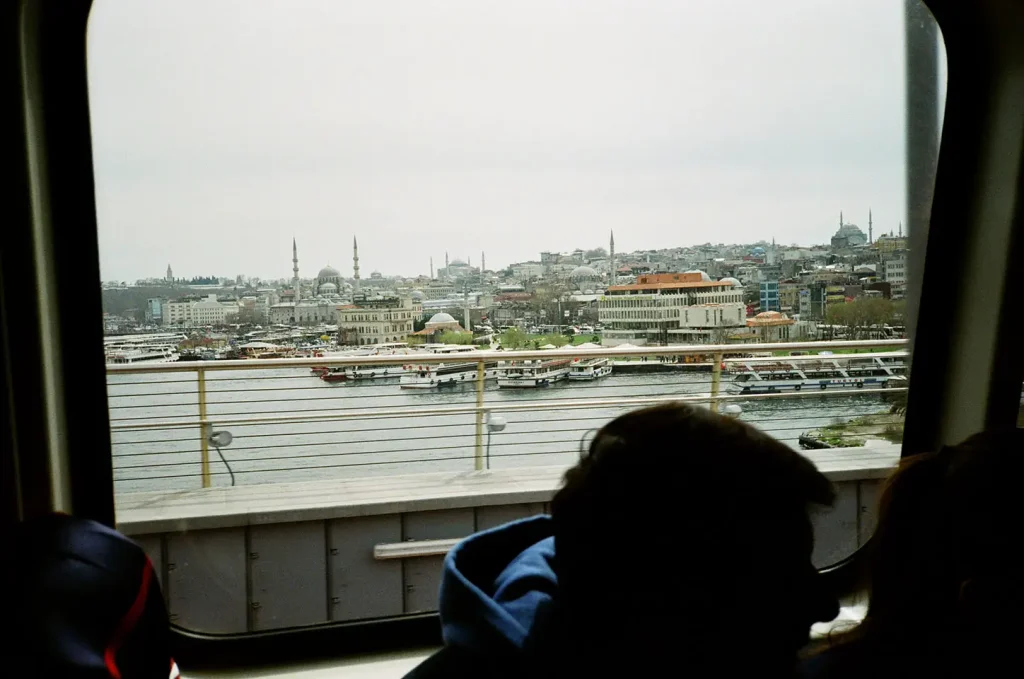
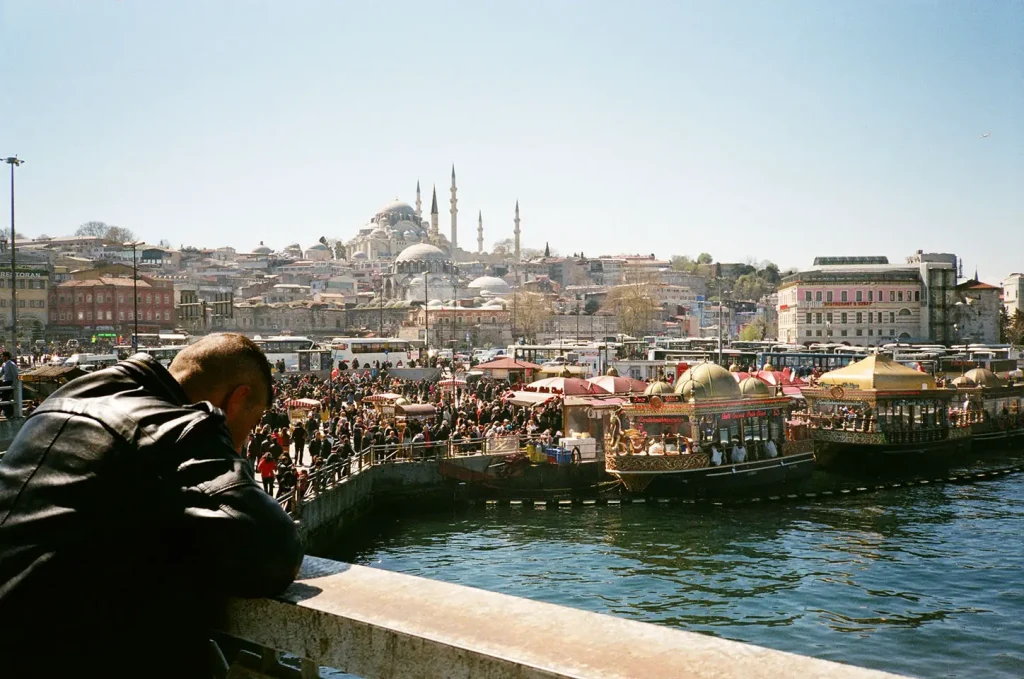 I was supposed to shoot one roll of film with The Traveling Yashica. I ended up using two rolls of film in the brief one week as there was so much to capture in Istanbul!
I was supposed to shoot one roll of film with The Traveling Yashica. I ended up using two rolls of film in the brief one week as there was so much to capture in Istanbul!
I started with a Fuji Superia 200 as it was wonderfully sunny in the first days and I love the city’s dazzling colours. I like the overall results and the rich colours in the photos.
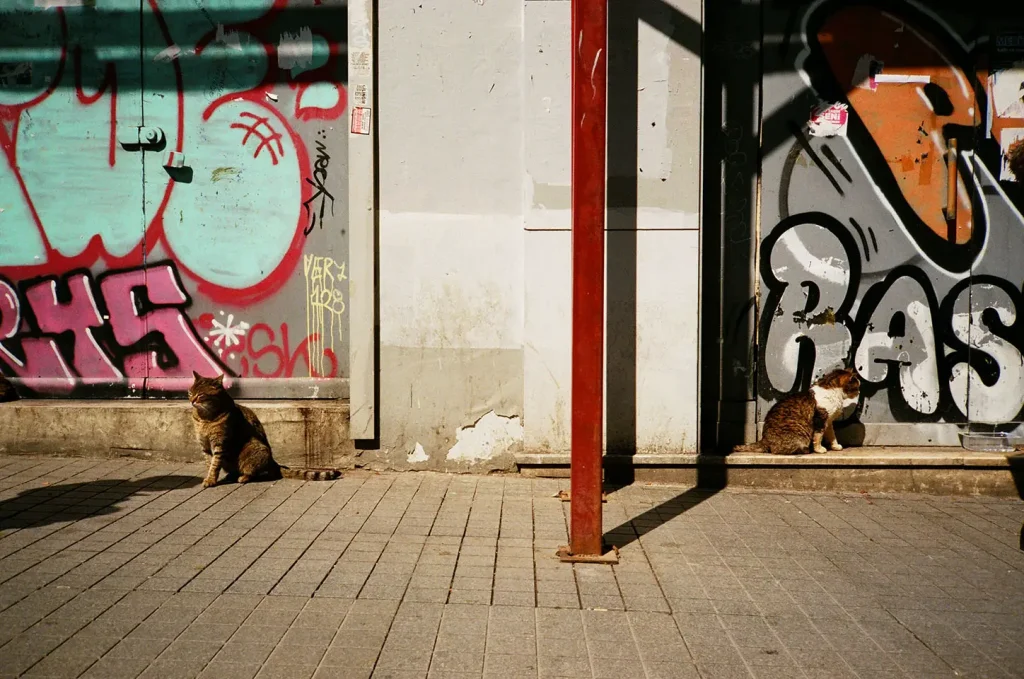 The auto-exposure of the camera seemed to work well. I am impressed by how some of the photos taken in low light turned out. I don’t know if the nice balance between the dark and bright areas should be credited to the camera or the Fuji Superia 200 film (or maybe both)? I didn’t try the built-in flash on the camera as I don’t like using a flash.
The auto-exposure of the camera seemed to work well. I am impressed by how some of the photos taken in low light turned out. I don’t know if the nice balance between the dark and bright areas should be credited to the camera or the Fuji Superia 200 film (or maybe both)? I didn’t try the built-in flash on the camera as I don’t like using a flash.
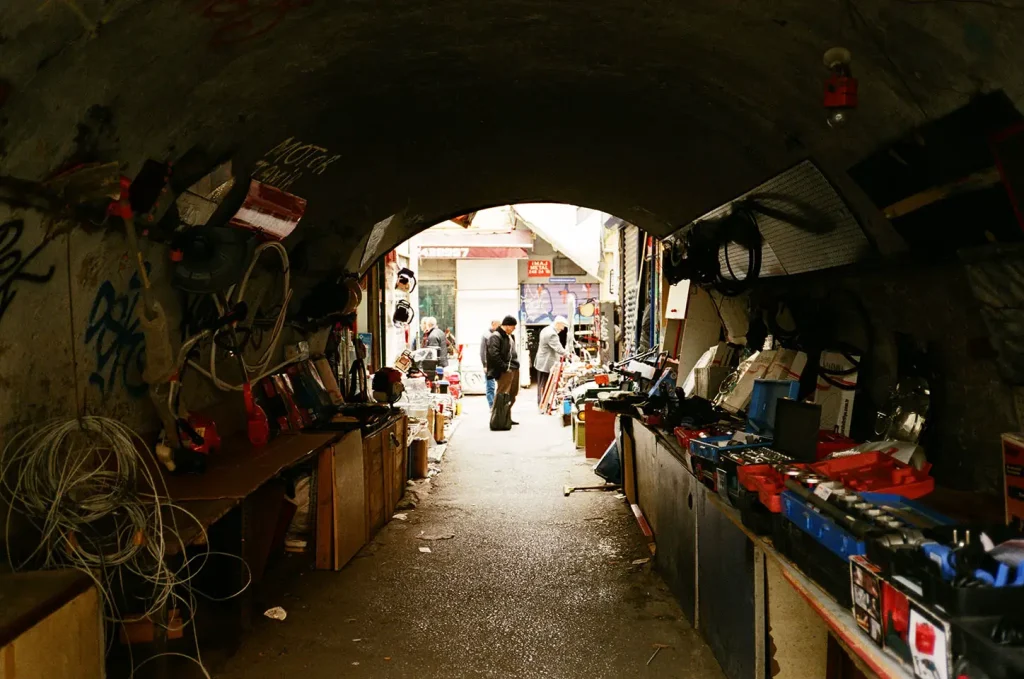 I took only two shots inside the immense Hagia Sophia as it was not very bright inside and I was shooting with an ISO 200 film. The picture below was focused on an area within the main dome that had some natural light falling onto it. I was surprised to see how well it turned out. The bright, clear tones nicely captured the magnificent interiors of this museum which was originally built as a Byzantine church before it was transformed into an imperial mosque by the Ottomans.
I took only two shots inside the immense Hagia Sophia as it was not very bright inside and I was shooting with an ISO 200 film. The picture below was focused on an area within the main dome that had some natural light falling onto it. I was surprised to see how well it turned out. The bright, clear tones nicely captured the magnificent interiors of this museum which was originally built as a Byzantine church before it was transformed into an imperial mosque by the Ottomans.
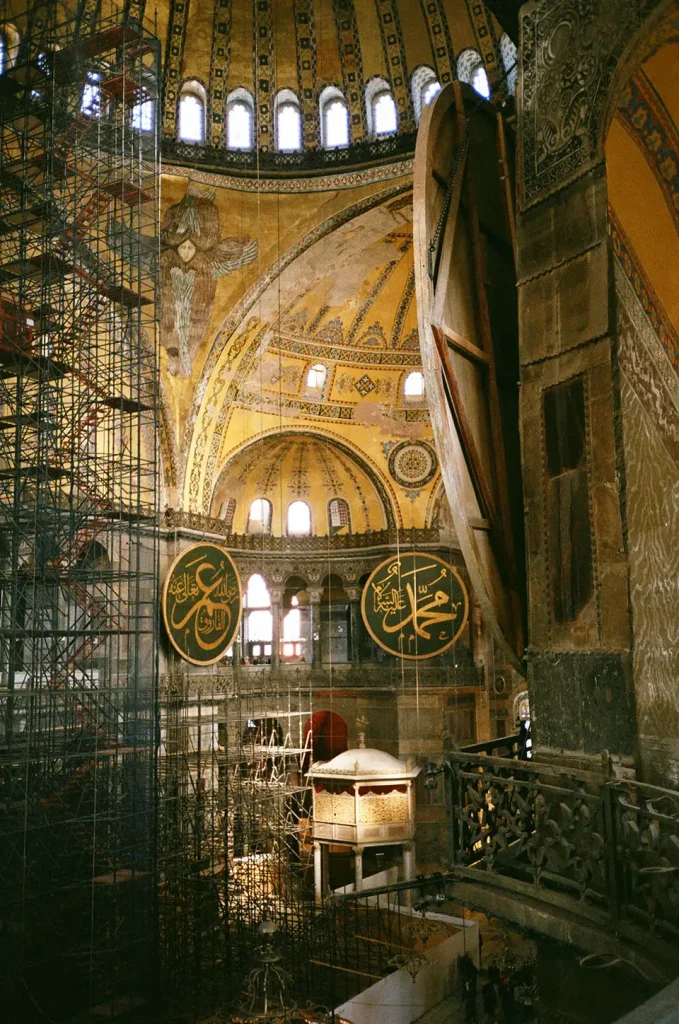
Here is another picture taken in low-light with the Yashica. This time, I was at the Eyüp Sultan Mosque which is regarded as one of the holiest sites in Turkey as it is built on the site of the tomb of a friend and standard bearer for the Prophet Muhammed.
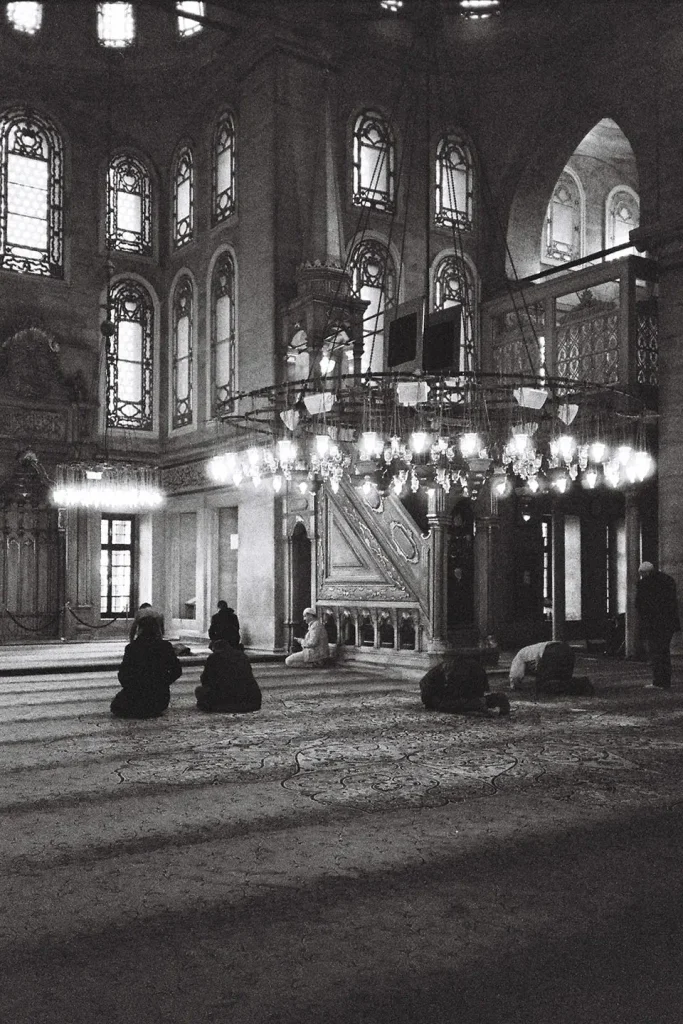
For the second roll of film, I used an Ilford HP Plus 400, which I think may have expired some time back. The pictures turned out okay though I had several duds on this roll.
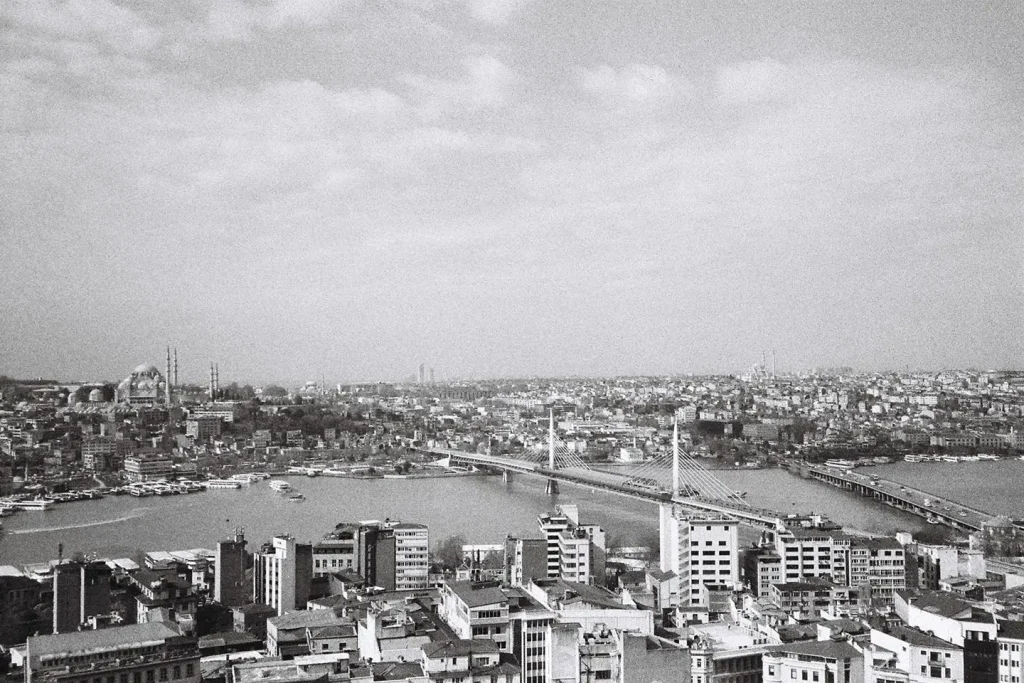
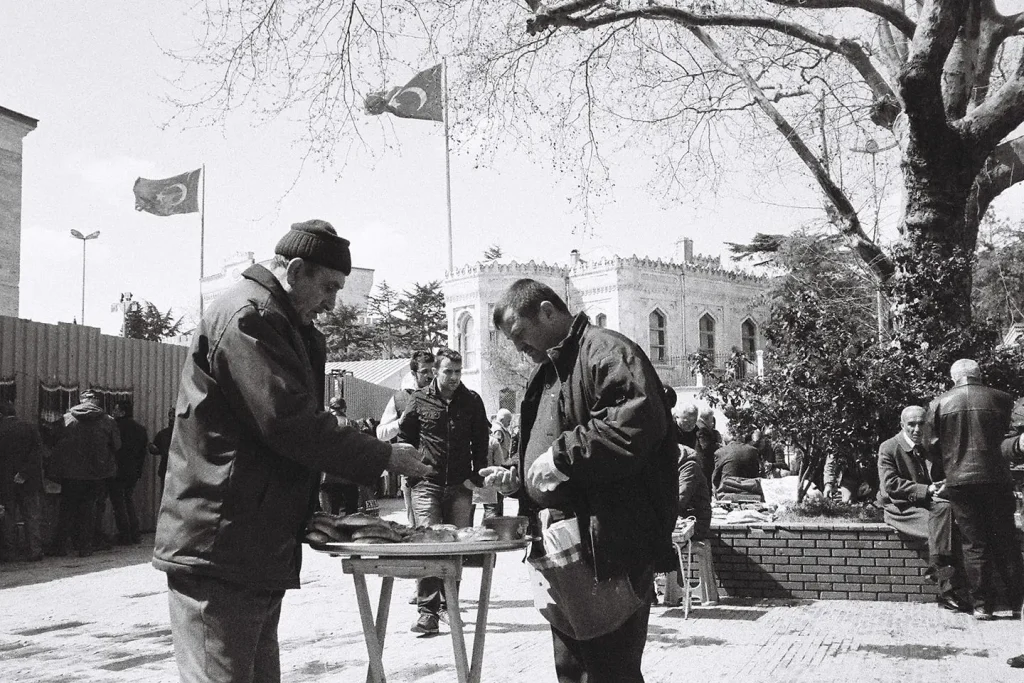
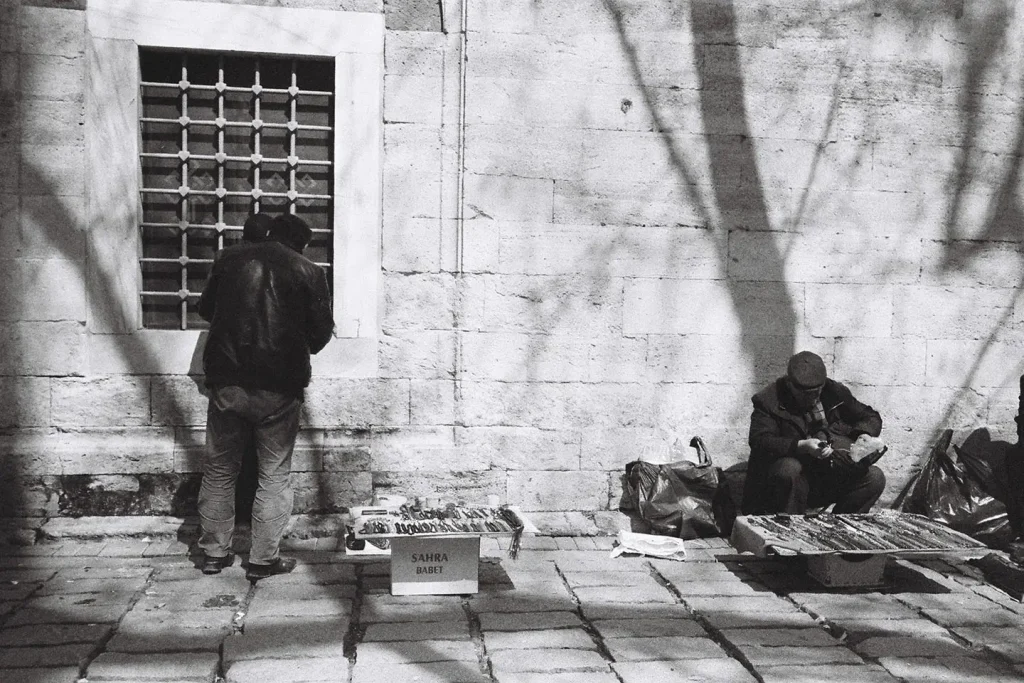
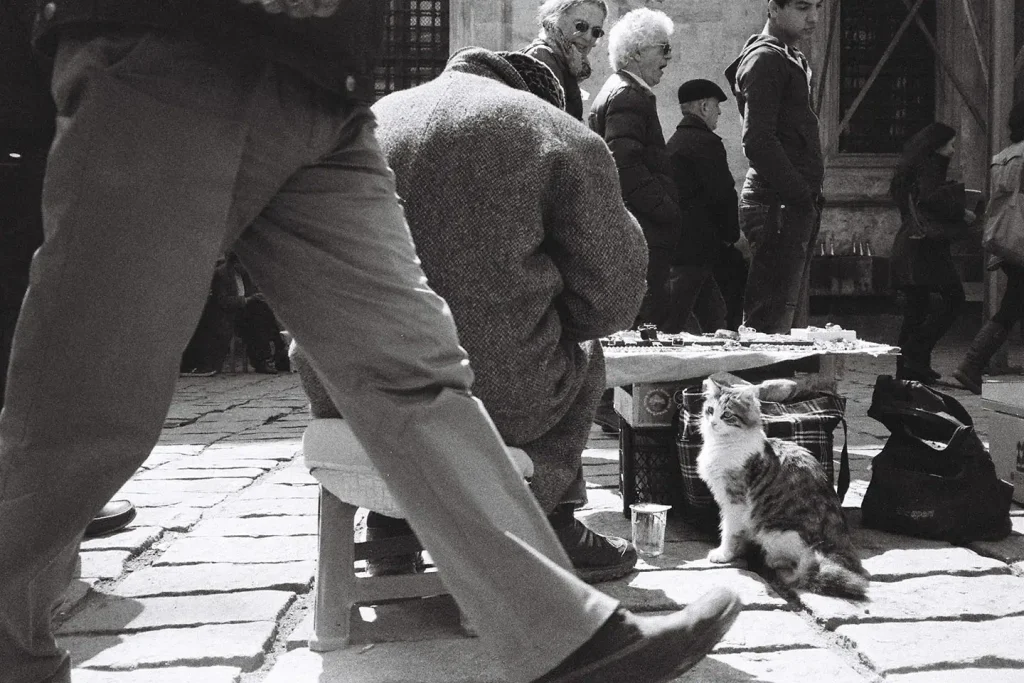 The first time I heard about the Yashica T4/5 was on Facebook, when a friend posted some old pictures taken on the train using the Super Scope function. I thought that was a clever and nifty feature, especially for people (including me) who enjoy street photography but are hesitant to hold up a camera in front of strangers.
The first time I heard about the Yashica T4/5 was on Facebook, when a friend posted some old pictures taken on the train using the Super Scope function. I thought that was a clever and nifty feature, especially for people (including me) who enjoy street photography but are hesitant to hold up a camera in front of strangers.
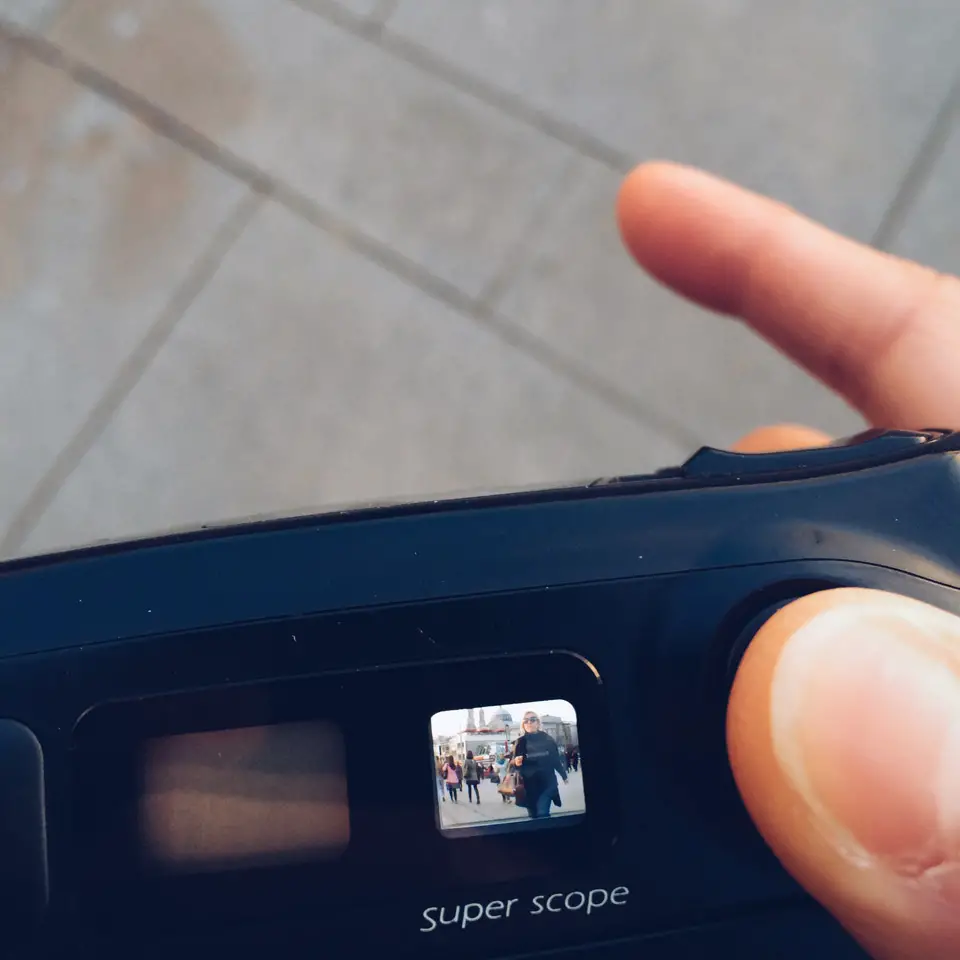 I like that I can take photos from waist-level using the super scope. I like it even more that I can use it for overhead shots – since it works like a periscope – as I’m quite short! It was fun taking photos using the superscope though it often felt like I was spying on other people. Here is one picture made through the super scope while waiting to enter the Hagia Sophia.
I like that I can take photos from waist-level using the super scope. I like it even more that I can use it for overhead shots – since it works like a periscope – as I’m quite short! It was fun taking photos using the superscope though it often felt like I was spying on other people. Here is one picture made through the super scope while waiting to enter the Hagia Sophia.
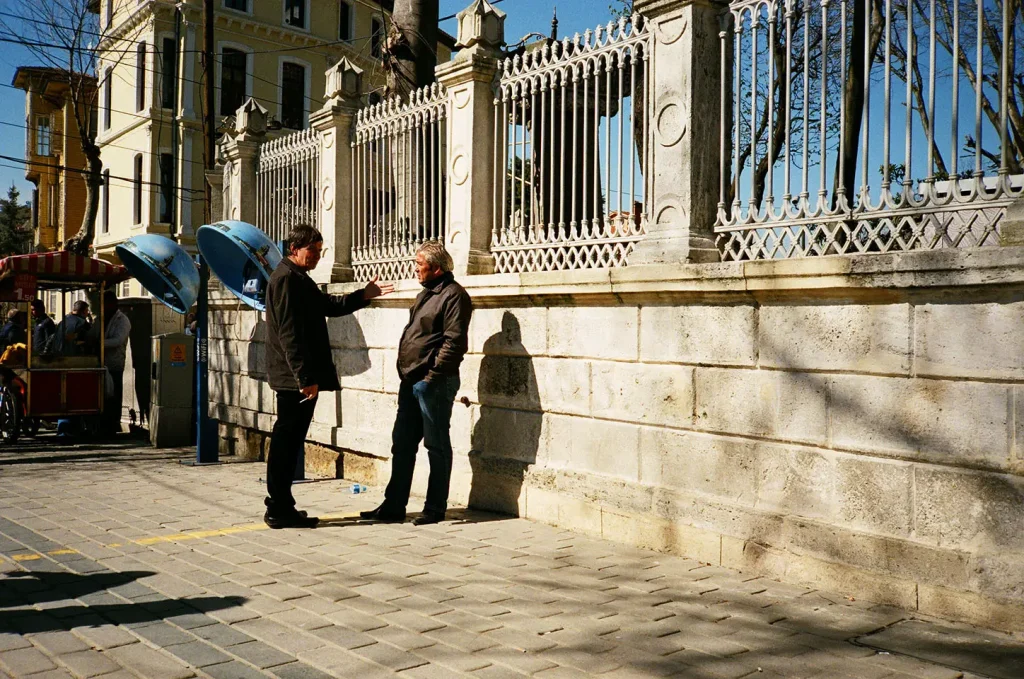 So what is my take on the Yashica T5?
So what is my take on the Yashica T5?
I am not particular about the brand nor technology as long as I’m comfortable using the camera and it produces good results. I recently wrote on my blog about how I would take a photo or approach a subject depending on the camera in my hands:
If I’m using my phone, I take several shots of the same scene and am quick to edit the preferred pictures with VSCO Cam. When I’m using an analog rangefinder, I deliberate, take less photos and spend more time on each shot. If I’m using a Lomo, I feel like I should be more creative and take photos from angles that I might not normally do (and sometimes end up with odd images). When I used to shoot with a digital SLR, I would have an unreal sense of confidence and feel self-possessed by the hefty chunk of metal and glass in my hands. Taking pictures with the Fuji x100 has been a pleasure and I love its handsome body as much as the beautiful pictures that come out of it.
With the Yashica T5, I struggled to get used to the sensitive shutter button. I am fascinated by the super scope feature but sometimes I felt more conspicuous as I was doing something different with my camera from other tourists around me. The quality of the pictures is great. I like its compact size, light weight and ease of use. Overall, it was great to have the chance to use the camera, but I don’t think it is a camera for me.
I would still recommend signing up for The Traveling Yashica project that Hamish has started as I think this is a great and fun project. It’s been interesting to see what other people all over the world have created with the camera. A big THANK YOU to Hamish for putting the camera on the road and I look forward to seeing more of its adventures.
Here’s a parting shot taken at sunset on Galata Bridge (I used my sunglasses as a make-shift filter). Hope you enjoyed these pictures!
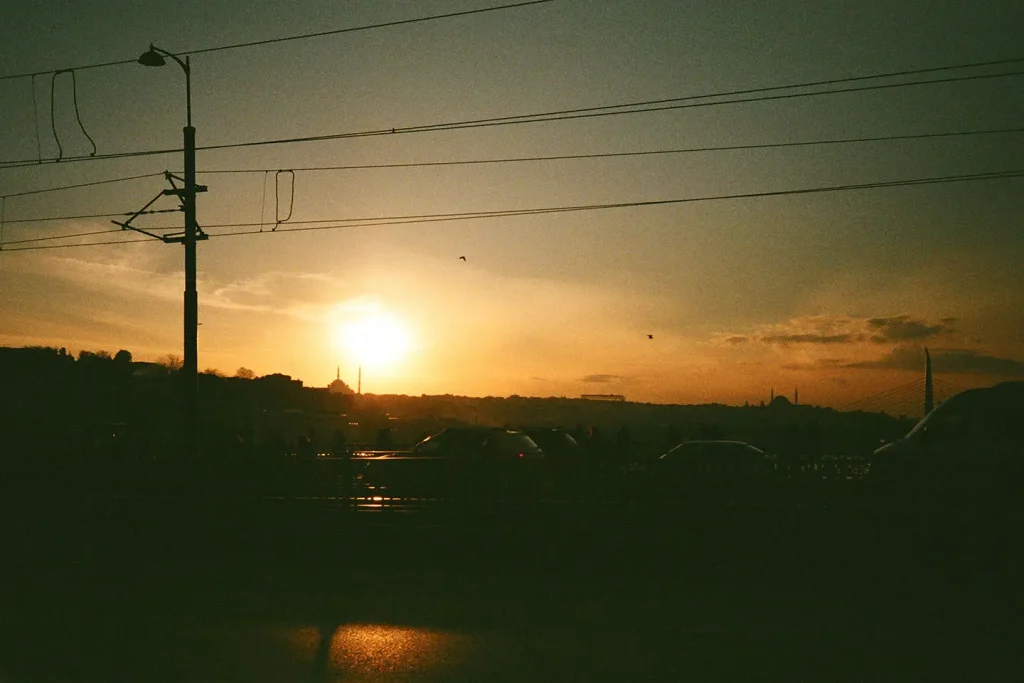
Share this post:
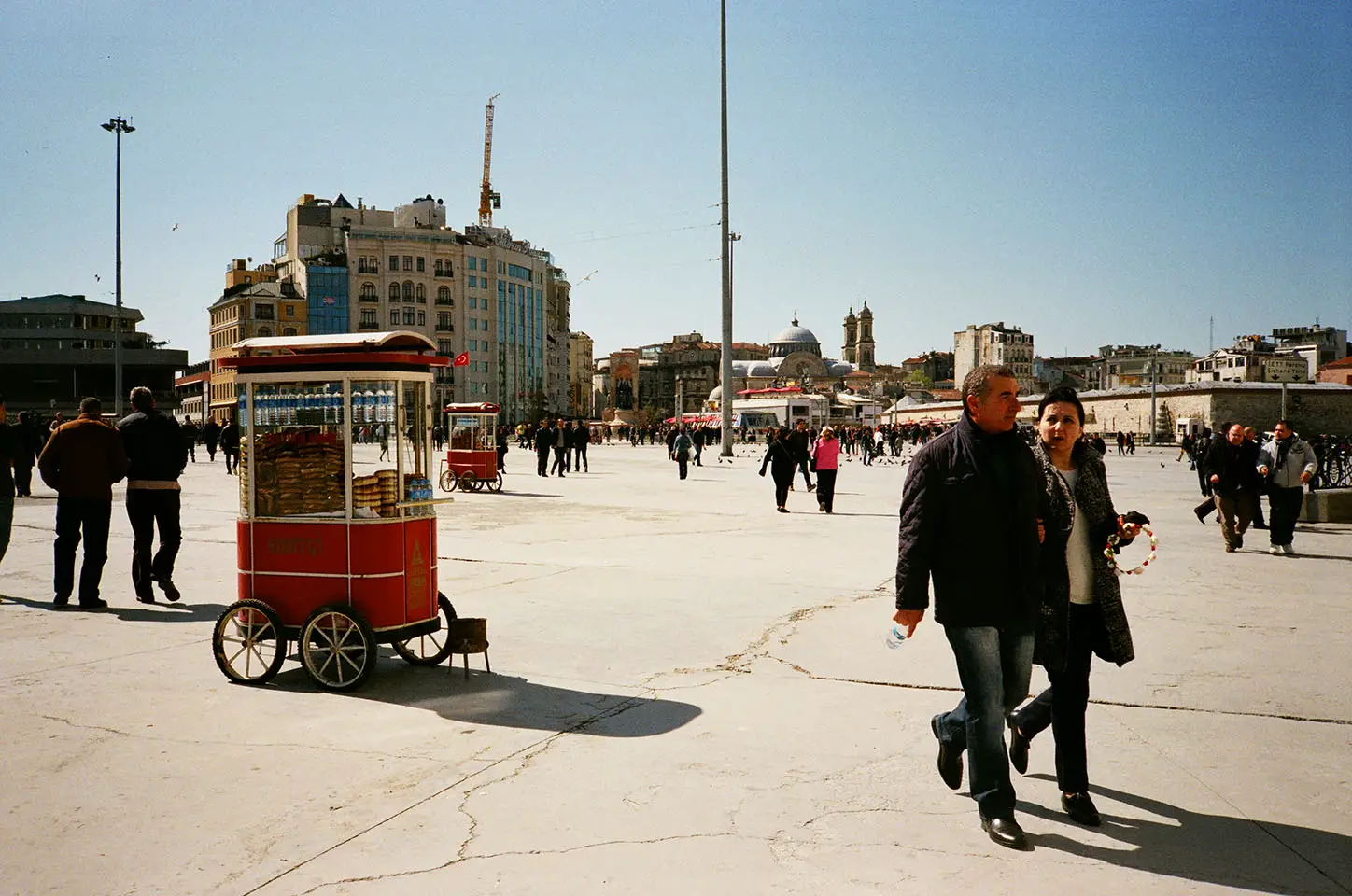








Comments
Matt on The Traveling Yashica: Angelina Hue in Brussels & Istanbul
Comment posted: 30/07/2015
Comment posted: 30/07/2015